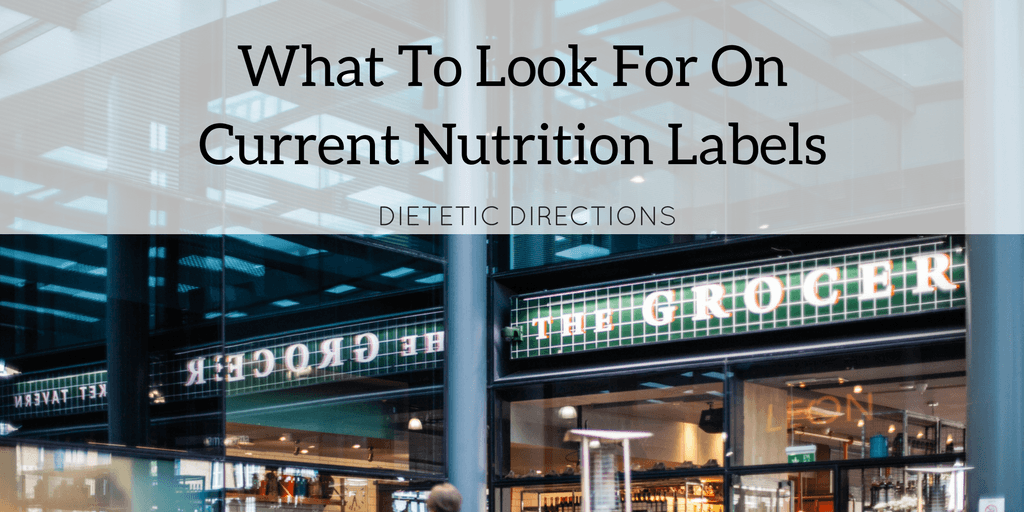
What to Look for on Current Nutrition Labels
Do you check the nutrition label before making a food decision? According to the recent Tracking Nutrition Trends Survey (2014), more than two thirds of Canadians read food labels to help them decide what to eat. If used correctly, food labels can provide us with valuable information about what is in our food, like the nutritional breakdown and possible food allergen(s).
Currently, our nutrition labels are in review by Health Canada in consolidation with the public and health professionals like Dietitians of Canada. There are many fantastic proposed revisions intended to make labels easier to understand. Here is a past post where I highlight some of the proposed changes.
Nevertheless, until our food labels are revised, I urge my clients to become confident reading and understanding nutrition labels so they can make informed (and healthy) choices. Under each tip today I identify what the current weakness of the food label is along with a proposed change.
Top 3 Tips for Effectively Using Food Labels:
-
Reference the Serving Size!
The nutrition label provides a lot of information that is all per the determined serving size.
TIP: Take a look at the serving size that is listed below the Nutrition Facts title. Decide ahead of time how much you plan on eating in order to get an accurate estimate. Then do the mental math by multiplying how many servings you will be consuming by the values on the nutrition table. For example, multiply calories by three if you plan on having three servings.
Problem: We do not often eat according to the listed serving size and companies often reference amounts that are unrealistically small. For example, a bottle of juice will often reference a serving size of 250mL when the actual bottle could be more than double. This is very deceiving, at first glance, you are looking at nutrition values that represent only half of what you will likely consume. If serving sizes do not reflect true consumption, we will all underestimate how much we are consuming.
Updates: Proposed food label updates will reference serving sizes that are more representative of what people typically consume. For example, one whole chocolate bar would be “one serving” instead of “half a chocolate bar” as one serving.
Serving sizes don't reflect true consumption, therefore we underestimate how much we consume! Click To Tweet-
Understand %DV:
This percentage on food labels confuses most people since it is not defined anywhere on the product. Percentage Daily Value (%DV) tells us the amount per serving that we are getting of the recommended amounts of select nutrients. Therefore, if you are receiving 10% of your daily fibre in cereal, this would be based on the 25g fibre recommended amount (for women).
Tip: Consumers can interpret these percentages easier if they understand that if something has 5% or less this is considered “a little” and if something has 15% or more, then it is considered “a lot”.
Problem: The current %DV are not always based on recommended amounts but sometimes based on the upper limit or the amount that you are recommended to stay below. Current food labels use the upper limit of 2300 mg for sodium instead of using the value of what people SHOULD be aiming for like 1500 mg daily.
Updates: Hopefully Health Canada will define what %DV means on the food label and adjust the reference values for sodium. The new labels should also add a %DV for sugar so that the public can interpret the number of grams as “a little” or “a lot”.
Tip: 5% or less it is considered “a little”, and 15% or more is considered “a lot”. Click To Tweet-
Check out the Ingredient List:
The best way to know what is in your food is to peruse the ingredient list.
TIP: The ingredients are in descending order so that the one in the highest amount is listed first. Therefore, your fibre 1 bar, that pretends to be healthy, has semi sweet chocolate chips listed as the second ingredient. This is a candy bar.
Problem: The current ingredient lists are often difficult to read. They are not in a consistent placement on the package and are often in small font and written in all CAPITALS and with commas in between.
Updates: Proposed changes to the ingredient lists will have a clear title for ingredients, upper and lower case letters, bullets between ingredients and a minimum font size. The new ingredient deck will also hopefully group all the sugars together under the term sugar instead of having different types of sugar scattered throughout the label.
Bottom Line:
Nutrition facts table is a valuable tool to understand what is in your food. We will have to stay tuned to find out what the new nutrition labels will look like. But until then, keep looking at the serving size, reference the %DV for key nutrients of concern and check out the ingredients to know what’s in your food. Keep in mind that many healthy wholesome foods (like fruits and vegetables) do not have nutrition facts and should be emphasized in your diet. Becoming a confident label reader will make you a more health-wise consumer.



